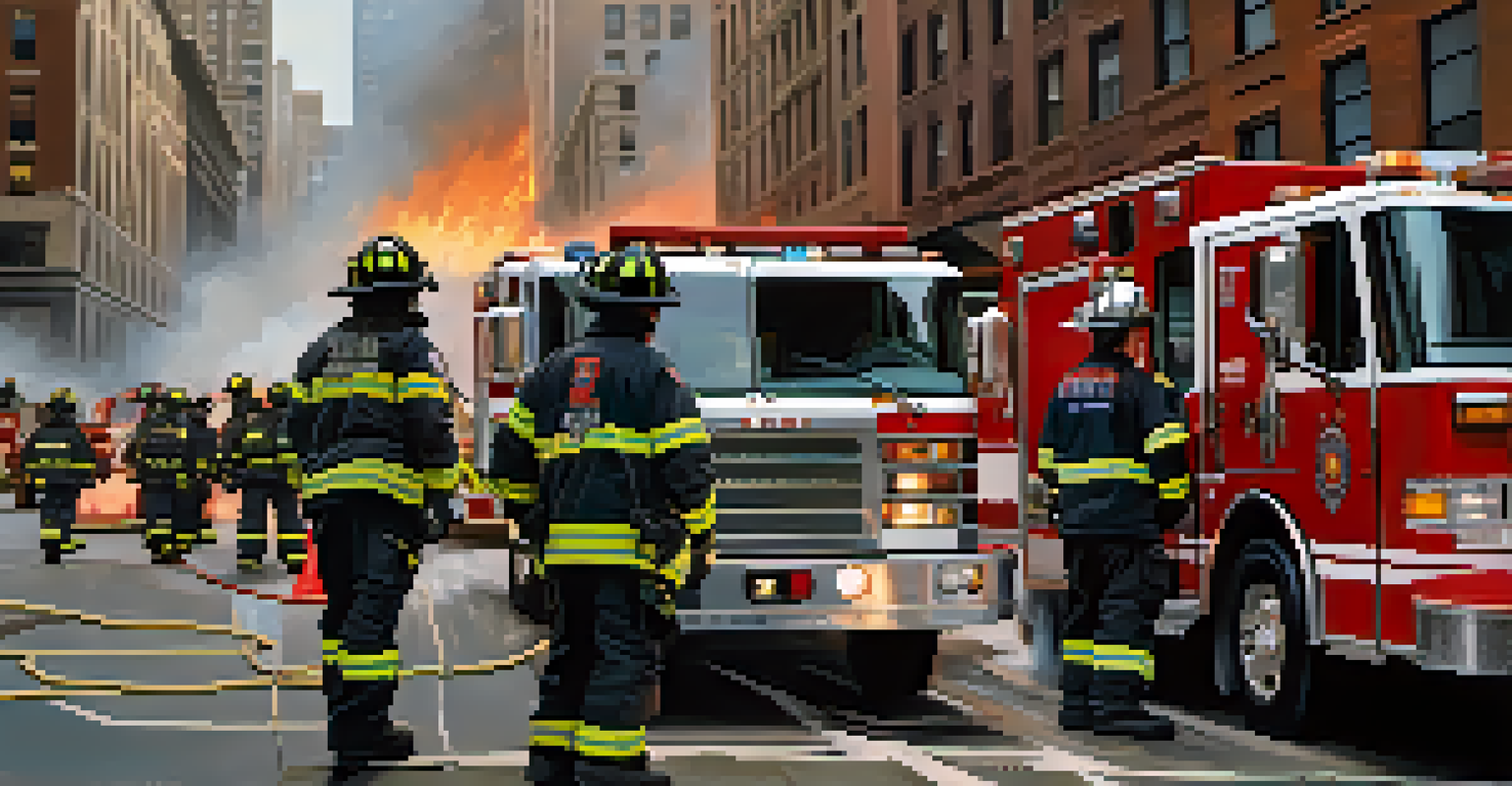Preparing for Man-Made Disasters: NYC's Approach

Understanding Man-Made Disasters and Their Impact
Man-made disasters encompass a range of events, from terror attacks to industrial accidents. Unlike natural disasters, they often stem from human actions, intentional or accidental, that can lead to significant harm and disruption. For a city like New York, which is a major global hub, the stakes are especially high.
Disasters don’t have to be the end. They can also be the beginning of a new chapter in our communities.
These incidents can cause widespread panic, economic loss, and damage to infrastructure. For instance, the September 11 attacks highlighted vulnerabilities and underscored the need for robust disaster preparedness. Understanding the potential risks is crucial for developing effective response strategies.
Moreover, man-made disasters can have long-lasting psychological effects on communities. Residents may experience anxiety and loss of trust in public safety systems, making it essential for NYC to not only prepare but also to foster resilience among its citizens.
The Role of NYC Emergency Management
NYC Emergency Management plays a pivotal role in preparing for and responding to man-made disasters. This agency coordinates citywide disaster planning, ensuring that all departments and agencies are aligned in their efforts. Their comprehensive approach includes risk assessments, training, and public education.

They conduct regular drills and simulations, which help first responders and city officials practice their emergency response skills. These exercises are vital for identifying weaknesses in current plans and improving them ahead of a real crisis. Additionally, community involvement in these drills fosters a sense of preparedness among residents.
Understanding Man-Made Disasters
Man-made disasters, stemming from human actions, can cause significant harm, panic, and long-term psychological effects on communities.
By leveraging technology and data, NYC Emergency Management continually updates its strategies to reflect current threats. This proactive stance is crucial in a rapidly changing world where new risks can emerge unexpectedly.
Community Engagement and Public Awareness Campaigns
Engaging the community is a cornerstone of NYC's disaster preparedness efforts. The city runs various public awareness campaigns to educate residents about potential threats and the importance of being prepared. For example, the Ready NYC initiative encourages residents to create emergency plans and kits.
Preparedness is not a response, it’s a mindset.
Workshops and informational sessions are conducted in neighborhoods to ensure that diverse populations understand the risks they face. This grassroots approach not only informs but also empowers citizens to take action in the event of a disaster. After all, an informed community is a resilient community.
Furthermore, NYC has developed partnerships with local organizations to spread awareness and resources. By collaborating with schools, businesses, and community centers, the city reaches a broader audience, ensuring that everyone has access to essential information.
Training First Responders for Diverse Scenarios
Training is critical for NYC's first responders, who must be equipped to handle various man-made disaster scenarios. The city provides specialized training programs that focus on everything from active shooter situations to hazardous material incidents. This comprehensive training ensures that responders can act quickly and effectively under pressure.
Moreover, NYC incorporates lessons learned from past incidents to refine its training programs continually. For example, after the 9/11 attacks, the city revamped its emergency response protocols to address identified gaps. This commitment to learning from experience enhances the overall readiness of first responders.
Role of NYC Emergency Management
NYC Emergency Management coordinates disaster preparedness efforts, conducting drills and utilizing technology to enhance response strategies.
Regular joint exercises with multiple agencies also help to build teamwork and coordination. These drills simulate real-life scenarios, allowing responders to practice their skills and improve communication, which is vital during an actual emergency.
Utilizing Technology for Enhanced Preparedness
Technology plays an increasingly important role in NYC's approach to disaster preparedness. The city employs advanced data analytics to assess risks and identify vulnerable areas. By analyzing patterns and trends, officials can better allocate resources and develop targeted response strategies.
Additionally, NYC's alert system keeps residents informed in real-time during emergencies. Through text messages, social media updates, and mobile apps, the city ensures that people receive timely information to make informed decisions. This tech-driven approach enhances situational awareness and community safety.
Furthermore, NYC is exploring innovative technologies such as drones and AI for disaster response. These tools can provide valuable insights and support first responders in their efforts to manage crises effectively, making the city more resilient in the face of threats.
Building Infrastructure Resilience Against Threats
Infrastructure resilience is vital for NYC's preparedness against man-made disasters. The city invests in hardening critical infrastructure, such as bridges, tunnels, and utilities, to withstand potential attacks or accidents. This proactive approach reduces vulnerability and enhances the overall safety of residents.
Additionally, NYC has implemented stringent building codes and safety regulations. These measures ensure that newly constructed buildings can withstand various threats, including blasts or chemical spills. By prioritizing safety in design and construction, the city minimizes risks for its citizens.
Community Engagement is Crucial
Engaging the community through awareness campaigns empowers residents to be prepared and resilient in the face of potential disasters.
Moreover, regular inspections and maintenance of existing infrastructure are crucial. By identifying and addressing potential weaknesses, NYC can prevent disasters from escalating and ensure that essential services remain operational during crises.
Collaborating with Other Agencies and Organizations
Collaboration is key to NYC's disaster preparedness strategy. The city works closely with federal and state agencies, as well as non-profit organizations, to enhance its response capabilities. This multi-agency approach ensures that resources and information are shared effectively during emergencies.
For example, partnerships with the Federal Emergency Management Agency (FEMA) provide NYC with additional support and funding for disaster planning and response initiatives. These collaborations help the city stay updated on best practices and new technologies in emergency management.

Furthermore, engaging with local businesses and community organizations strengthens the city's response network. By fostering these relationships, NYC creates a more robust support system that can mobilize quickly in the event of a disaster.